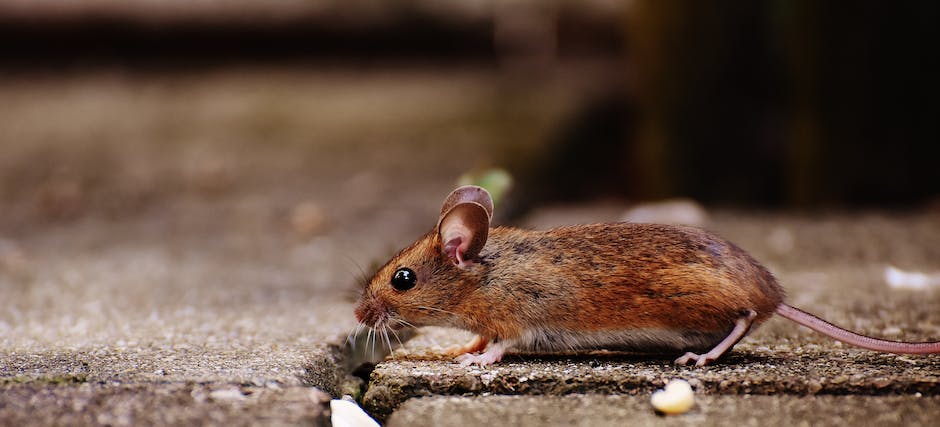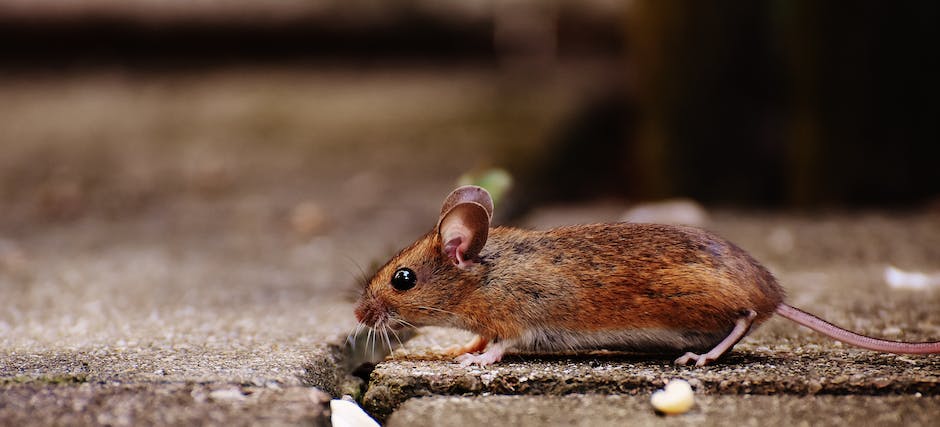In order to determine what kind of mouse poop you are dealing with, it is important to know what types of mice live in your area. House mice and deer mice are the most common types of mice in the continental United States.
House mice are small, slender rodents with large ears. They are typically light brown with a dark stripe running down the center of their back. Deer mice are slightly larger than house mice and have dark brown or black fur. Their tail is longer than their body and they have white feet.
Mouse droppings are typically small, dark, and have a pointed end. They are about ¼ of an inch long and ¼ of an inch in diameter. If you see mouse droppings in your home, it is a good indication that you have a mouse problem.
Mouse poop typically looks like small, dark pellets.
What can mouse poop be mistaken for?
Mouse droppings are commonly mistaken for cockroach or rat droppings. This is because they are often found in similar areas and can be of a similar size. However, there are some key differences that can help you to identify mouse droppings.
Mouse droppings are usually smaller than cockroach or rat droppings. They are also more likely to be found in areas where mice are nesting or breeding, such as in attics, basements or behind appliances. If you see droppings in these areas, it’s likely they are mouse droppings.
Mouse droppings can also be found near items that have been destroyed by mice, such as gnawed food packaging or shredded paper. If you see droppings near these items, it’s a good indication that they are mouse droppings.
If you find mouse poop in your home, it is important to clean it up immediately. Mouse poop can contain diseases that are harmful to humans, so it is important to take precautions when handling it. Mouse poop looks like small dark brown or black granular pellets. Adult mice will poop pellets that are about a ¼ inch on average. They have pointed ends and look like seeds or small dark grains of rice. These pellets will start out black, and they will lose their color over time.
Is it mouse poop or something else
Mice droppings are small and smooth with pointed ends, usually about 1/8 – 1/4 of an inch long. Norway rat droppings are typically brown and are blunt on both ends. Roof rat droppings are dark and both ends are pointed.
Mice tend to leave droppings in areas where there is a food source, so the kitchen is a common place to find mouse poop. If you have mice in your home, be sure to check behind food boxes, in the back of your silverware drawer, and under the kitchen sink for droppings.
What is the best repellent to get rid of mice?
There are a few different natural mouse repellents that you can try in order to keep mice and rats away. Peppermint oil is one option that can be effective, as mice and rats hate the scent. Cinnamon is another scent that will repel them. Vinegar is also a good option, as the pungent smell will keep them away. You can also try citronella, ammonia, bleach, or mothballs.
Roach poop is usually brown or black in color, and it is typically found in small, round pellets. Mouse droppings, on the other hand, are usually small and elongated with pointed ends. If you see small, round pellets with blunt ends in your home, it is likely that you have a roach problem.
Do mice leave a single poop?
If you’ve noticed mouse droppings around your home, it’s a good indication that you have a mouse problem. Mouse droppings are usually ⅛ to ¼ of an inch in length and are dark in color. A mouse’s poop becomes noticeable because a mouse doesn’t leave behind a single dropping – they defecate as they’re active, and they’re not picky about where they do their business. If you’re seeing mouse droppings, it’s important to take action to get rid of the mice before they cause further damage to your home.
Mice droppings are best described as small, pellet-shaped and dark brown in color with pointed ends. They are typically small, about ¼-inch in length. If you find mouse droppings in your home, it’s a good indication that you have a mouse problem. Be sure to clean them up properly and contact a pest control professional to solve the issue.
Can you get sick from mouse droppings
Hantaviruses are a type of virus that can cause severe respiratory illness in people. People can become infected with hantaviruses when they breathe in air that contains the virus, or when they touch mouse or rat urine, droppings, or nesting materials that contain the virus and then touch their eyes, nose, or mouth. Hantaviruses can cause severe respiratory illness, and in some cases, death.
If you want to avoid attracting mice and rats to your house, you need to make sure that there is no food waste on the floor or surfaces, and that they have nowhere to shelter. In particular, during winter, make sure that they don’t have any way to get into your house to avoid the cold.
What do mouse urine stains look like?
Mouse urine will usually mix with dust and grime to form dry crusty yellowish marks that emit an ammonia-like smell. The look of mouse urine stains will vary depending on the surface. For example, if they urinated on a clean white cloth, you will easily see small yellow stains.
If you’re hearing scratching sounds in your walls or ceiling, it’s a pretty good indication that you have mice in your home. Other signs of mice include droppings, urine pillars, grease rubs, and mouse smells. Track prints and damage to foodstuffs and furnishings are also good indications that you have mice. Unusual pet activity may also be a sign of mice in the home.
Do mice come up the toilet
Mice are small rodents that can climb ladders, walls, and cables and swim through pipes. They can adapt quickly to their environment and are difficult to control once they have establish a food source. If you have a mice problem in your home, be sure to seal off any potential entry points and set traps to catch them.
House mice are nocturnal creatures that prefer to sleep during the day. However, they will often hide in cool, dark places in your home during the day in order to avoid being disturbed. Some of the most common hiding spots for house mice include between walls, in pantries, inside cupboards, and underneath sofas and old boxes. If you suspect you have a mouse problem in your home, be sure to check these areas for signs of infestation.
How many droppings does 1 mouse leave?
Mice droppings are small—about ½ inch long—are dark, and both ends are pointed. Rat droppings are larger—½ to ¾ of an inch long—are dark, and both ends are pointed.
As someone who is concerned about the welfare of animals, I believe that humane trapping is the best way to go when it comes to dealing with pests. Traps are generally preferred over poison bait as they are less hazardous to children and pets. However, if you’re dealing with a severe infestation that can put your family at risk, consider using spring traps or calling a professional pest control company.
What scares mice out of hiding
You can use any of these potent smells to bring mice our of hiding and steer them in the direction you want them. Mice don’t like the smell of garlic, onions, cayenne pepper, cloves, ammonia and alcohol, so using any of these smells will help you get rid of them.
Mice are nocturnal creatures that are most active at night. They are sensitive to bright lights and have poor eyesight. Their survival instincts cause them to avoid larger animals and being active at night helps them avoid being seen by predators, as well as people. Because mice avoid danger, they may be scared off by bright, flashing lights or loud noises.
Conclusion
Mouse poop looks like small, brown, pellets.
Mouse poop looks like small, dark pellets. It is generally uniform in shape and size, with a smooth texture.

